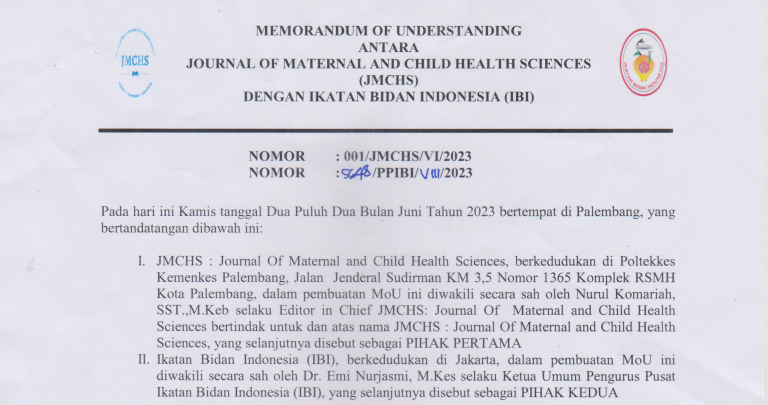Effectiveness of Using Hot and Cold Packs Against Pain In First Stage of Labor
Abstract
Women has given normal to birth, 100% feel the pain process. This event can cause trauma due to pain. Vaginal pain can be reduced by the non pharmacological methods that are Hot pack dan Cold pack. The purpose of this research is to know the effectiveness of the hot pack and cold pack againts the intensity of the time labor kala 1.
Desaine being used is prettest-postest control group design, research is implemented at 3 BPM of Palembang city on November 7th until Desember 14, 2017. The population of this research is all maternity. Swatches with simple random sampling, where the samples are observed by 30 people. This research data is taken by using the ceklist sheet, after tabulate analysed data by using a sign test the rank test with a level error a = 0,005.
Based on the research that is done to show that before used Hot and Cold pack respondent (86,7%) and 80%) has mainly moderate pain. After used Hot and Cold pack respondent (80%) has mild pain. From the test, it's got a significant value on the Hot pack (p value =0,000) and Cold Pack (p value=0,000) so p value<0,0, can be concluded there is difference between Hotpack and coldpack againts the decrease in the intensity of labor pain the according to this research is a medical officer, especially the midwife always provide the motivation and treat hotpack and cold pack on maternity when Kala 1, so that the pain can be reduce.

This work is licensed under a Creative Commons Attribution-ShareAlike 4.0 International License.
Authors who publish with this journal agree to the following terms:
- Authors retain copyright and grant the journal right of first publication with the work simultaneously licensed under a Creative Commons Attribution License that allows others to share the work with an acknowledgement of the work's authorship and initial publication in this journal.
- Authors are able to enter into separate, additional contractual arrangements for the non-exclusive distribution of the journal's published version of the work (e.g., post it to an institutional repository or publish it in a book), with an acknowledgement of its initial publication in this journal.
- Authors are permitted and encouraged to post their work online (e.g., in institutional repositories or on their website) prior to and during the submission process, as it can lead to productive exchanges, as well as earlier and greater citation of published work












